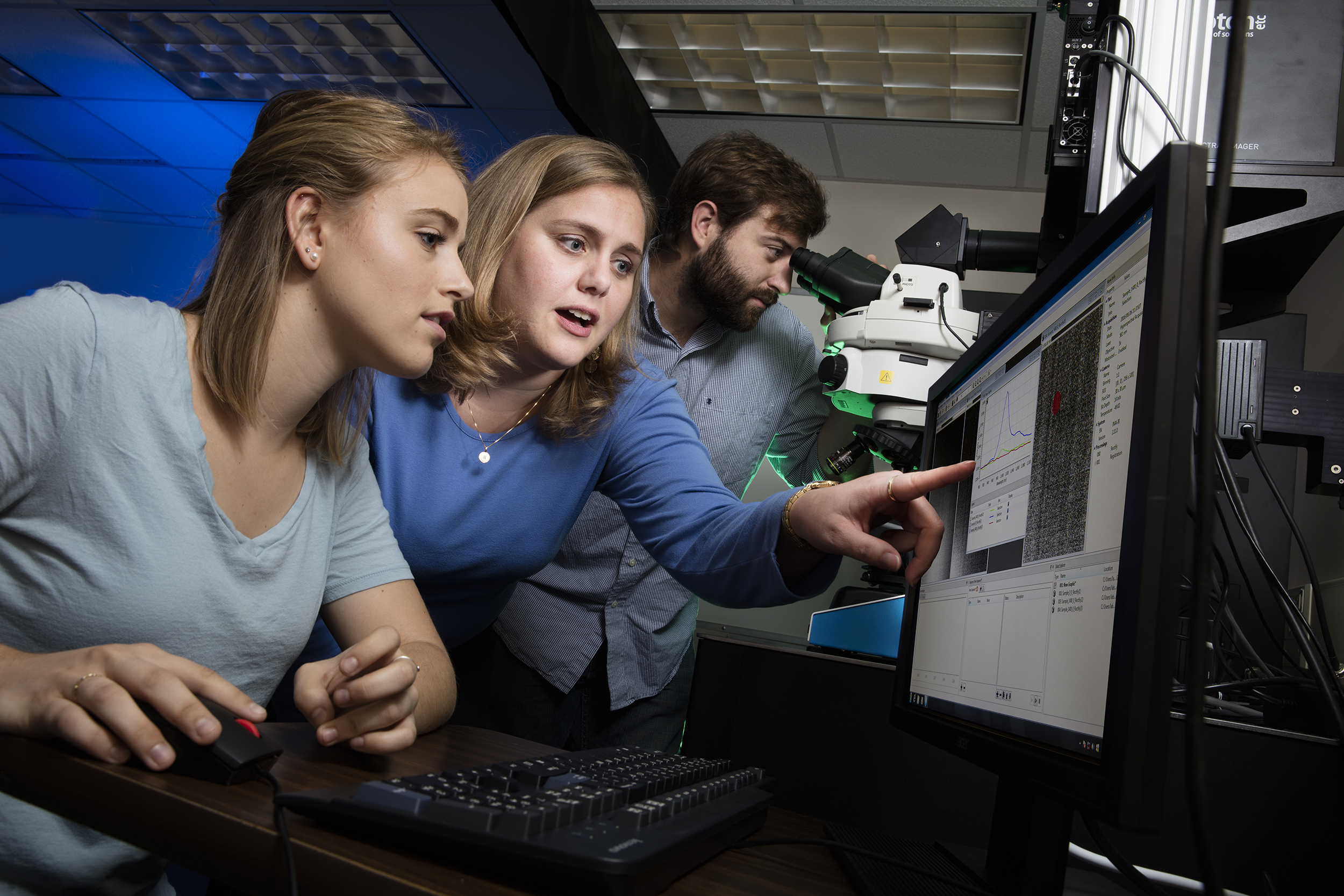
A University of Nebraska–Lincoln research team led by Nicole Iverson has earned a $1.77 million grant from the Department of Health and Human Services to make nitric oxide sensors easy to use and to utilize them to study both healthy and diseased cells.
Nitric oxide is an important molecule in living systems, but relatively little is known about it. Scientists have discovered that when a patient is having a heart attack, giving them a pill that releases nitric oxide opens their blood vessels and helps with their symptoms. Nitric oxide is also involved in inflammatory reactions — everything from a cut finger to cancer.
Nitric oxide degrades within the bloodstream in less than a millisecond, which makes it difficult for a sensor to detect its concentration in biological systems. Iverson’s lab works with a carbon nanotube sensor that can detect nitric oxide. Because such sensors are specialized and complex, there are only about 10 labs in the world that work with them.
Iverson’s lab aims to develop platforms that will make carbon nanotube sensors easy to use, allowing other researchers to benefit from the technology, and to use the sensors to learn about both healthy and diseased cells.
“If we are able to understand NO’s role in disease development, we will be able to diagnose diseases earlier and create better treatments for patients after they have been diagnosed,” said Iverson, assistant professor of biological systems engineering. “This grant will focus on cancerous cells, but the information we learn and procedures we develop can be used to investigate other diseases in the future.”
The Iverson Lab currently consists of graduate students Ivon Acosta, Eric Hofferber and Jakob Meier, along with undergraduates Carley Conover, Becca Francis, Abigail Haworth and Karleen Kolar. The DHHS grant will allow for the hiring of additional grad students and a postdoctoral researcher.
“This grant provides my lab with the opportunity to perform diverse research experiments, all with the common goal of improving sensor technology and understanding the importance of nitric oxide in biological systems,” Iverson said.
The Iverson Lab, which recently moved into a new space in the Ken Morrison Life Sciences Research Center, is now submitting a manuscript that describes the use of a carbon nanotube sensor in a large-animal model — the first time this has been done anywhere. Chris Calkins, professor of animal science, is collaborating on the research.
“I think the fact that I am here at Nebraska, where we have such great large-animal research, is the reason that my lab was able to perform these studies,” Iverson said. “It is a great advance for carbon nanotubes sensors that probably would not have happened if I had gone to a university that didn’t specialize in large-animal research.”








